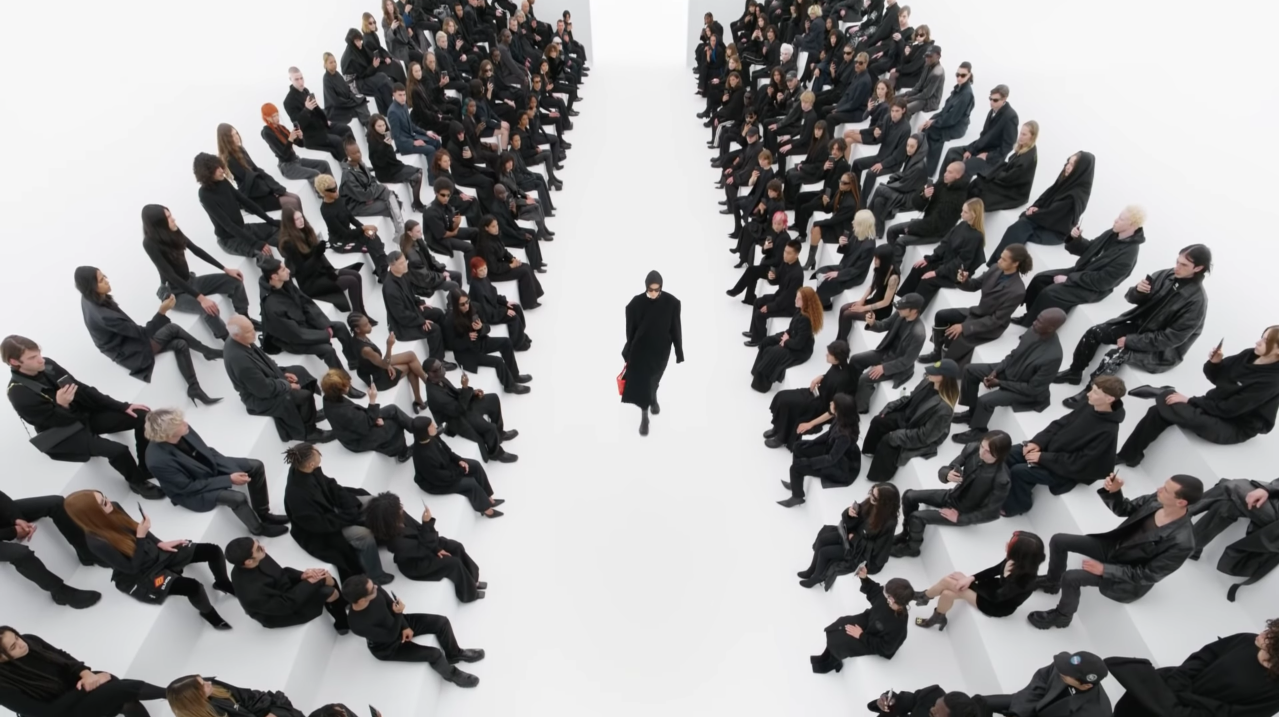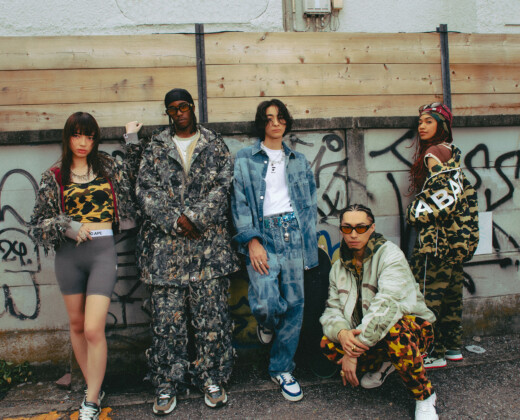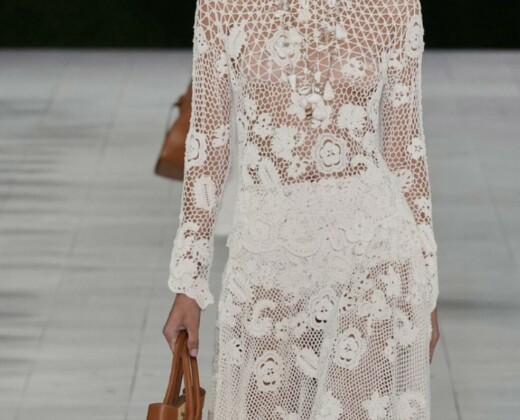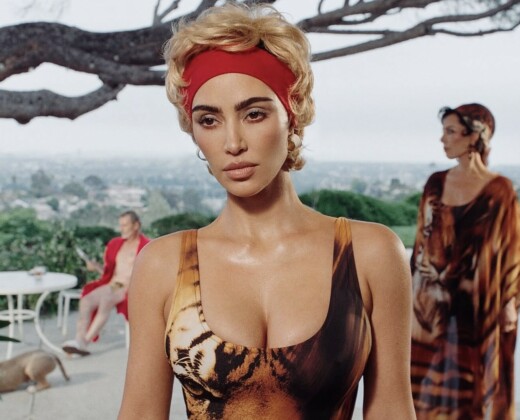Deepfakes, Cyber-gothic Fashion And An Identity Crisis.
Our perception of reality has undoubtedly changed over the past year, with some key industries reinventing themselves with the intent to stay alive and remain innovative throughout a period that forced us into monotony.
This is true for almost every creative industry, but most importantly for the fashion one. With virtual catwalks taking over, online fashion shows, and Instagram live attendance to these, the fashion world has had to redirect to the online world, relying on the development of technology and our overconsumption of social media.
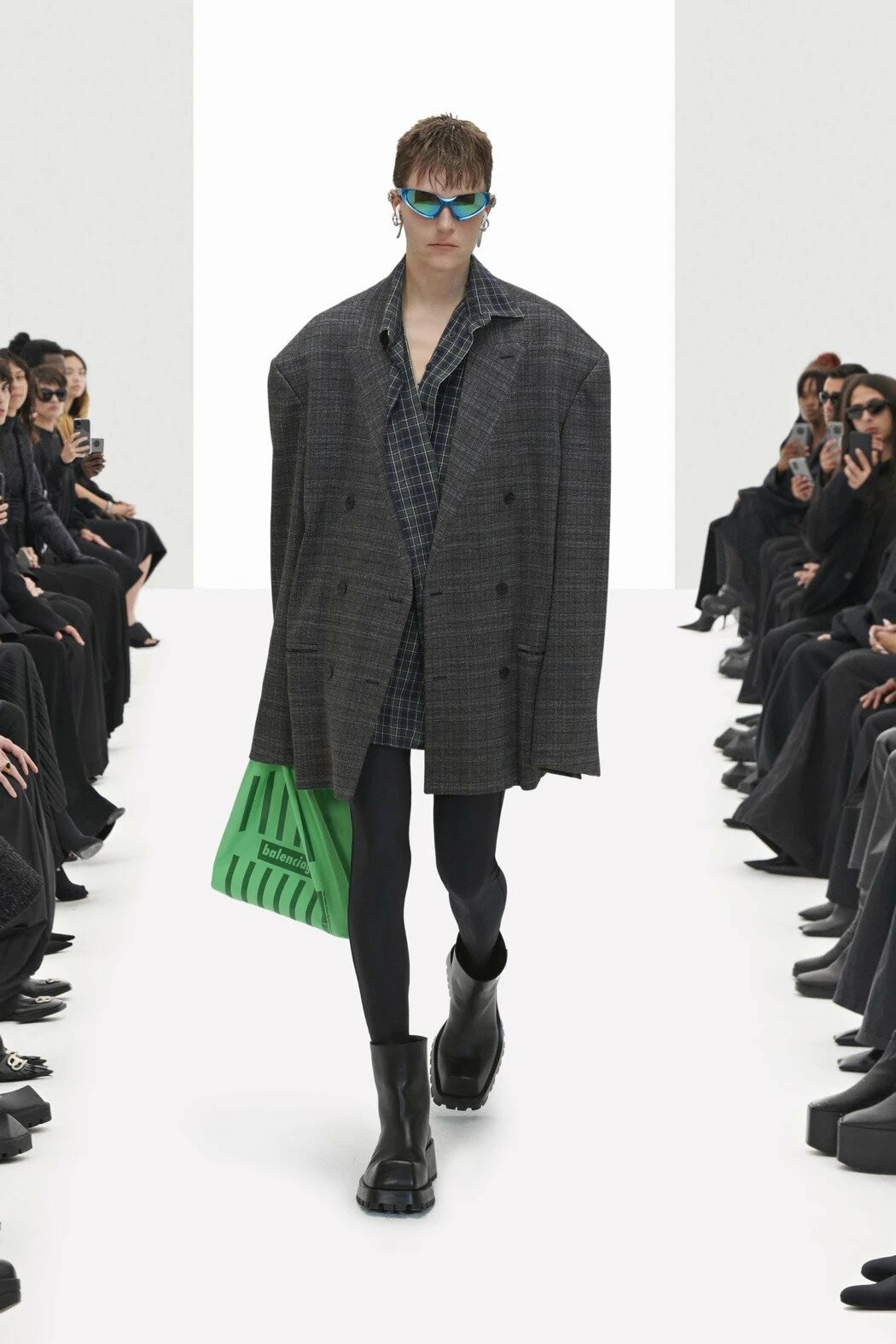
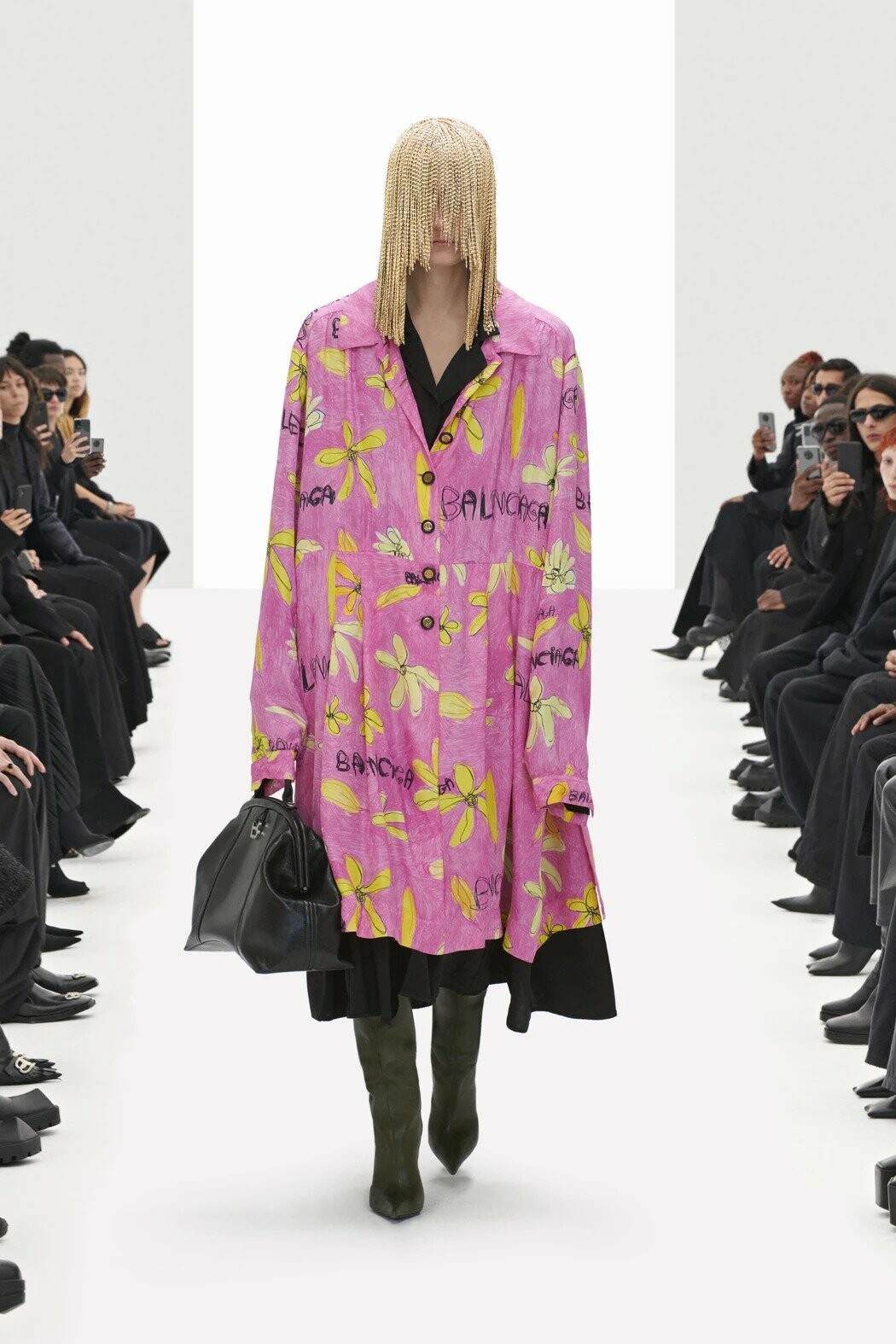
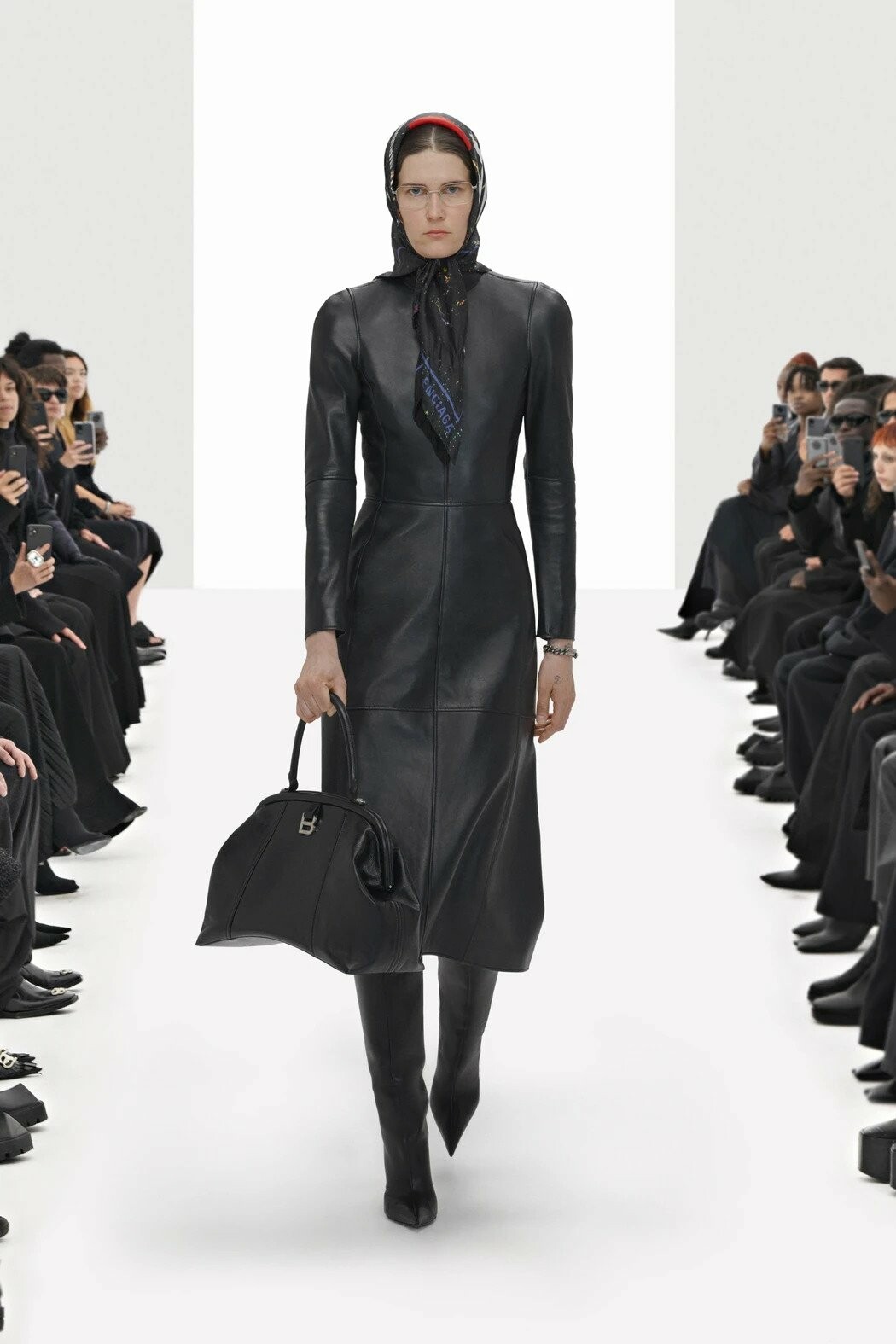
For some this has been a success, for others (like us) it’s become a monotonous alternative… As much as we love the commodity of accessing everything from our phones, aren’t we tired of Instagram catwalks and shows? Didn’t it take away the exclusive element of high fashion?
Normally we would answer yes, we were bored of it… until we saw the deep-fake Balenciaga SS22 show ‘Clones’.
Balenciaga, through the creative direction of Demna Gvasalia, created an alienating virtual event through the interplay of cloning and disruption. One with a very direct, and refreshing message that centred on the presentation of alternative realities and our inability to distinguish the ‘real’ real from the crafted real.
As explained by Demna Gvasalia in a recent phone call with Vogue “What we see online is not what it is. What’s real and what’s fake?”.
The protagonist of the show was none other than Eliza Douglas, the American performer and painter known for her interdisciplinary take on art that has been opening and closing Balenciaga’s shows since fall of 2016. This time her role exceeded her usual one, allowing her to be the one and only model, or at least so it seems. Eliza appears wearing womenswear and menswear on the all-white runway in front of an apparent audience.
The show itself is non-existent, as explained by Balenciaga’s creative director, the audience is not there, the models are modelled, and in reality, the protagonist is (and has been for a while) technology. The show uses different narrative tools, starting with the evident play with cloning and deepfakes seen as all the models appear to have Eliza’s face. The narrative then continues through the use of music, with the choice of a soundtrack composed by Bfrnd that takes parts of all-time classics and represents them with a metallic, and almost disturbing, voice. And finally, through the presentation of functional, cyber-gothic, and somewhat rebellious clothing the show comes full circle – representing the continuation of the ‘Hacker Project’ started with Alessandro Michele, creative director of Gucci, last April.
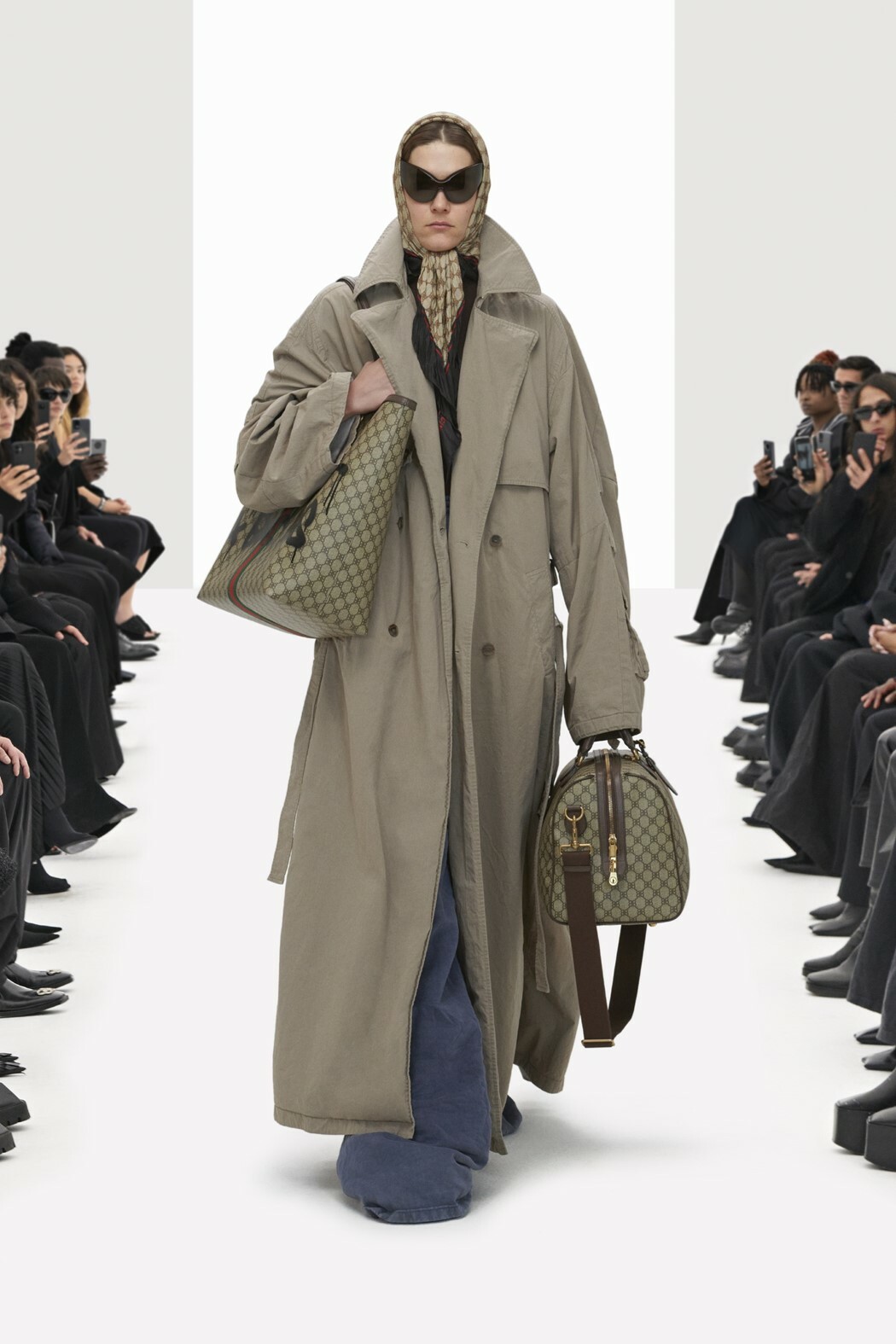
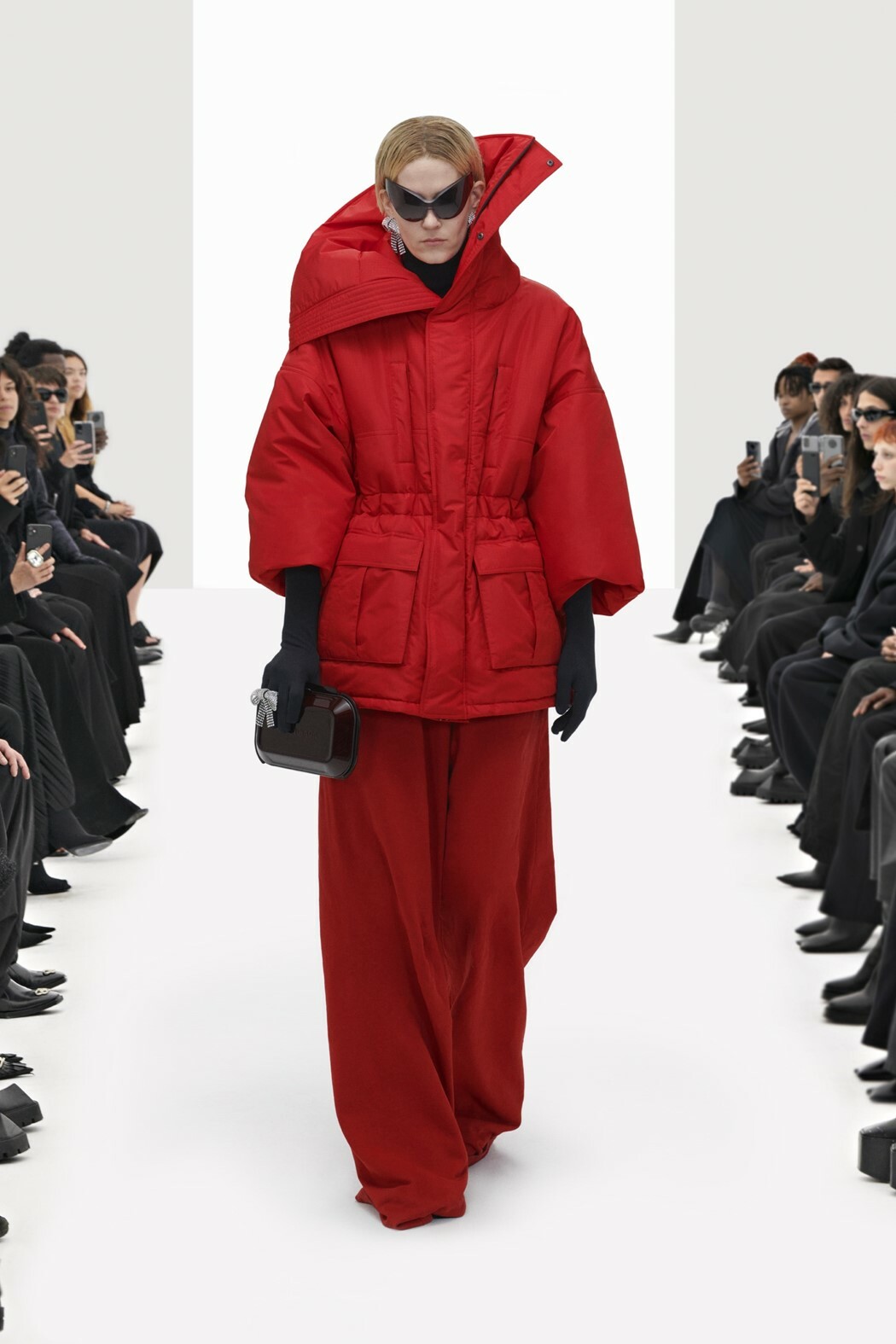
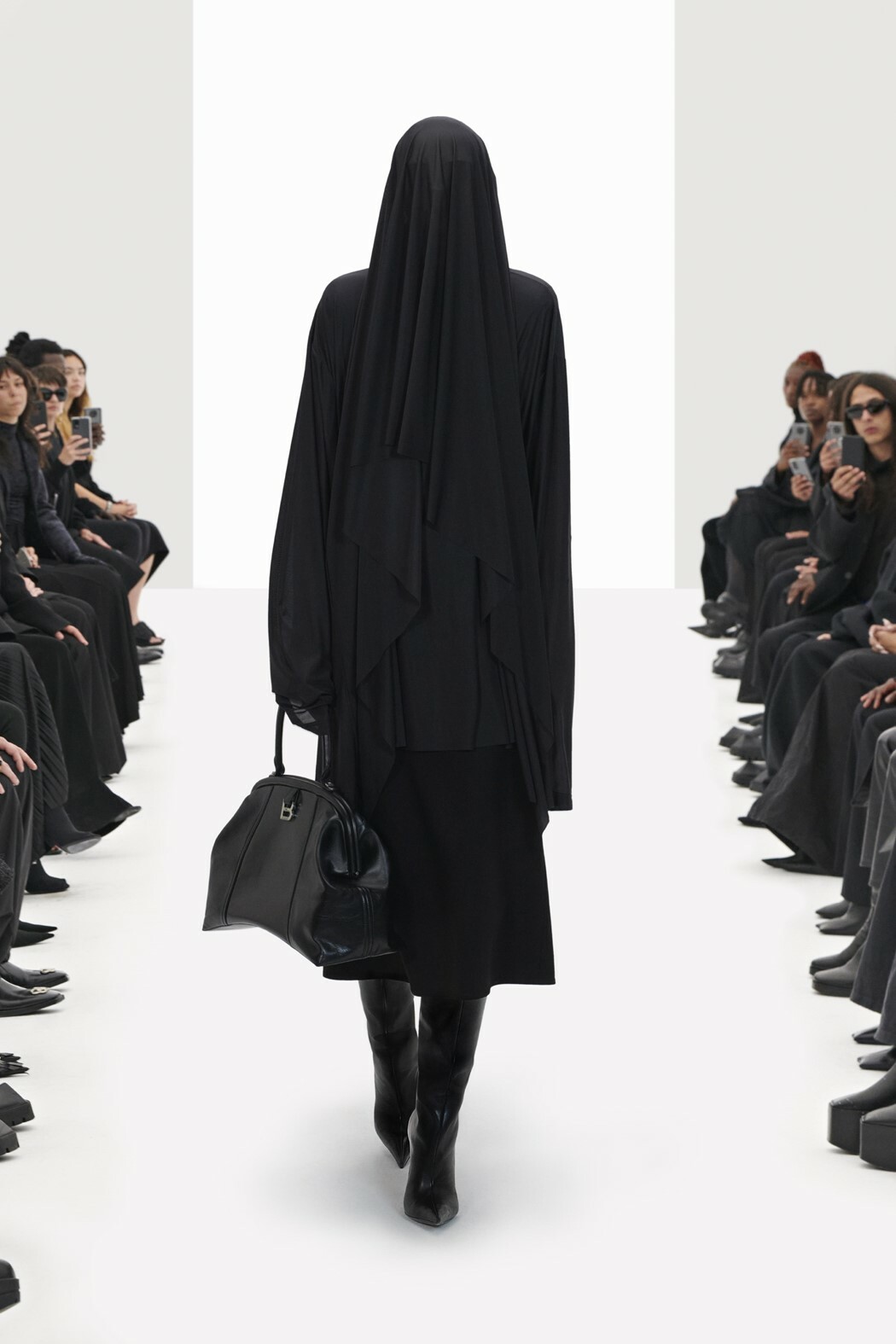
Everything about this show was almost mutant and aberrant, but in a way that forced us to appreciate the change. Besides, both the show and collection were in true Balenciaga attitude.
The reimagined universe was characterised by reversible garments, wrap-around coats, cargo pants that transform into jumpsuits, metal hoops and safety pins as accessories. The best, or for some worse, part? The fake Gucci of course. By that we mean, the evident interpretation of Gucci’s signature styles in Balenciaga products.
This show was a distant reality from the one with rather classic fashion pieces, one that introduced reconstructed garments that relate to the idea of singularity in a fake and clone-like world.
Have a look at the show below:
Words By Chiara Ferrari


